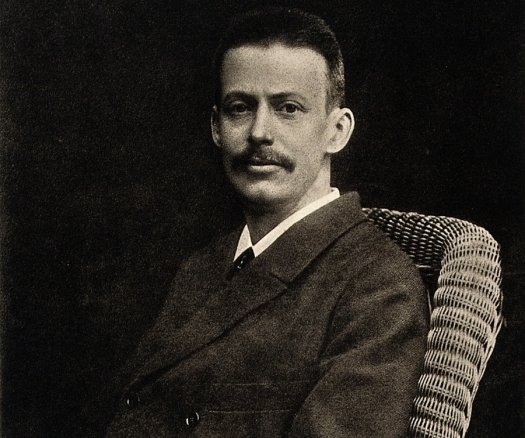UV light and blood
NielsFinsen.png

Photo from Wellcome Images, Wellcome Library, London / CC BY 4.0
Dr. Niels Ryberg Finsen, an Icelandic Faroese-Danish physician and scientist, was awarded the Nobel Prize in Medicine and Physiology in 1903 for his work on phototherapy.
Over 100 years ago, Faroese-Danish physician/researcher Dr. Niels Finsen found that ultraviolet light could effectively treat skin disorders. He was awarded the 1903 Nobel Prize for Medicine because of his use of UV light against lupus vulgaris which is tuberculosis of the skin.
Walter Ude, an MD from Minneapolis, reported a series of 100 cases of Erysipelas (an acute streptococcus bacterial infection) in the 1920s, claiming a nearly 100% cure rate with UV skin irradiation.
Emmett Knott pioneered the irradiation of autologous (from the same body) blood treatment. His first try was with dogs before treating a woman near death with post-abortion sepsis in 1933. She was thought to be untreatable and left for dead but recovered wonderfully and went on to have children.
By 1942, obstetrician Dr. Virgil K. Hancock and Knott had successfully treated 6,520 patients using UBI without any harmful effects whatsoever. Nearly every time it was used it cured infections and toxicity.
The most prolific American researcher was Dr. George Miley, a clinical professor at Hahnemann Hospital and College of Medicine. In 1942, he reported success with 103 consecutive cases of acute pyogenic infections. Results of recovery were 100% for early infections, 46 out of 47 for moderately advanced and 17 out of 36 of those who were moribund (near death).
In the mid 1940s and early 1950s, Dr. E.W. Rebbeck used UBI for patients experiencing septicemia (systemic infection) following childbirth and abortion. While many of his patients were near death when they came to him at Shadyside Hospital in Pennsylvania, all responded in a positive fashion and many recovered completely.
An extremely interesting article appeared in Time Magazine on June 13, 1949. The article stated:
“Doctors have known for 15 years that irradiating the blood with invisible ultraviolet rays helps in some diseases, notably blood poisoning. The clinic decided to use the technique on children with acute rheumatic heart disease. Last week, they reported success in 22 consecutive cases. The three doctors concluded that "UBI" (ultraviolet blood irradiation) is safe and may prove, after further tests, to be the best treatment available.”
Ironically, today’s “mainstream medicine” still has no reliably effective treatment for viral conditions such as pneumonia, but will not accept UBI as an acceptable therapy. One of the questions that you should be asking by this point is, "If the treatment works so well, why isn't it commonly used?"
The Decline of UBI
1950s
The age of antibiotics and vaccines had dawned and the enthusiasm was palpable. This all but spelled the end of an era for UBI therapy which would take a back seat despite the fact that for certain indications (e.g. hepatitis, viral pneumonia, and streptococcal toxemia) it was proven demonstrably superior. Unfortunately, research into this effective therapy came to a virtual halt.
Just recently I had a conversation with an older doctor whose father had been one of the physicians who had used a UBI machine in his practice at the hospital. "When all those drugs came onto the scene," she recounted, "They told my father to pack up his machine and get it out of there." It may seem ridiculous, but that really does sum up the attitude towards UBI at that point in time.
1955-1990s
Only a few American physicians continued to work with UBI. Russia and Germany took the lead in light therapy producing scores of clinical studies which continued to demonstrate the efficacy and safety of this therapy.
1990s-Present
There are over 250 practitioners in the US, 3,000 in Europe and thousands more throughout the world who use this treatment. Over 1 million UBI treatments have been successfully administered with astounding results and minimal side effects to patients.
Today, the honest truth about why it is not more fully accepted in mainstream medicine seems to stem from the fact that it just isn't financially lucrative. Whether we want to accept it or not, mainstream medicine is a business and business in today's society means that our primary purpose is financial gain. I do realize I'm painting with broad brushstrokes now, but generally speaking, that is the culture we live in.
Other contributing factors include ignorance, skepticism and a general intolerance for treatments that do not require surgery or a drug.
Medical Effects
"So what does this therapy actually do?"
I have been very intentional in making sure that this does not become a technical article so while I won't bore you with all the details, it is good to know what medical effects have been documented (see Ultraviolet Blood Irradiation Therapy (Photo-Oxidation): The Cure That Time Forgot by Dr. Robert J. Rowen for a great review of older data on UBI).
Changes in the blood
- Increase in erythrocytes
- Increase in hemoglobin
- Increase in white blood cells
- Increase in basophilic granulocytes
- Increase in lymphocytes
- Lowering of thrombocytes
Clotting changes
- Lowering of fibrin
- Normalization of fibrinolysis
- Trend towards normalization of fibrin-split products
- Lowering of platelet aggregation
Blood parameter changes
- Lowering of full-blood viscosity
- Lowering of plasma viscosity
- Reduction of elevated red blood cell aggregation tendencies
Metabolic changes: improvement in oxygen utilization
- Increase in arterial P02
- Increase in venous P02
- Increase in arterial venous oxygen difference (increased oxygen release)
- Increase in peroxide count
- Fall in oxidation state of blood (increase in reduction state)
- Increase in acid-buffering capacity and rise in blood pH
- Reduction in blood pyruvate content
- Reduction in blood lactate content
- Improvement in glucose tolerance
- Reduction in cholesterol count, transaminases, and creatinine levels
Hemodynamic changes
- Elevation of poststenotic arterial pressure
- Increase in volume of circulation
Improvement in immune defenses
- Increase in phagocytosis capability
- Increase in bactericidal capacity of blood
- Modulation of the immune system
"And what does all of this mean for me?"
For one, it means that this therapy offers a whole lot of healing for a variety of disorders. It needs to be understood that UBI or Biophotoinc Therapy (BT) does not “purify” the blood or attempt to treat all of the blood, but instead it works with the body’s immune and circulatory system to help them to function more effectively.
You can imagine how this changes the treatment of certain diseases. Instead of a temporary cessation of symptoms, infections can be dealt with properly without the risk of side effects while autoimmune issues can be resolved by the balancing of "run away" T cells.
When we talk about UBI and the effect that it has on the body, we can't sum it up simply by saying, "It inactivates bacteria and virus" or "It cuts inflammation" or "It helps to activate your immune system." Yes, it does all of these things, but one of the beauties of UBI therapy is that it is non-specific, meaning that it treats the whole body to bring about healing in a more holistic manner.
Listen to the testimony of a doctor we heard from California:
Virus, lyme, dental and even hair loss
"I've also used it (UBI) on varicella zoster, trigeminal neuralgia, influenza A, herpes simplex I and II, cellulitis and dental abscesses with rapid response. The few things requiring more than one treatment so far have been chronic sinusitis (3), Lyme (4), and hepatitis C (treated a case and saw PCRs drop 60% in 4 days, then lost contact with the patient). I've also used it in a case of SLE where vasculitis produced alopecia, and the UVA (this unit produces both UVA and UVC) restored flow sufficiently for the hair to come back completely in 6 weeks.
~ Doctor from CA
This article is the second in a four-part series of articles on UBI by Tom Lowe.


